Dear Steemit Friends:

If you've followed me for a while, you'll know that I am a connoisseur in the making, and enjoy all sorts of delectable food. However, it's rare to see me prepare my own gourmet delight, and so, today I'll be sharing my first experience making Chinese dumplings!
Dumplings fall under the umbrella of Wheat Flour Foods (面食) and has been enjoyed by the Chinese for nearly two thousand years.
Originating some time between the Han Dynasty and Three Kingdoms period, dumplings were actually originally used for medicinal purposes however there are a few legends surrounding the origin of the first dumplings.
One such story is that of a Chinese doctor - Zhang Zhongjing, who used the dumpling skin to wrap mouth administered medicine. For instance, he would often put Lamb meat, and peppers inside which was thought to help counter common colds as well as resist frost bite.
Another story originates from the era of the Three Kingdoms. Zhuge Liang who was a general for the state of Shu Han, used dumplings to create a dam for a poisonous marsh, whilst his enemy, the Nanman used heads instead.
Both are interesting stories about the origins of the dumpling, which probably have quite a lot of truth to them.
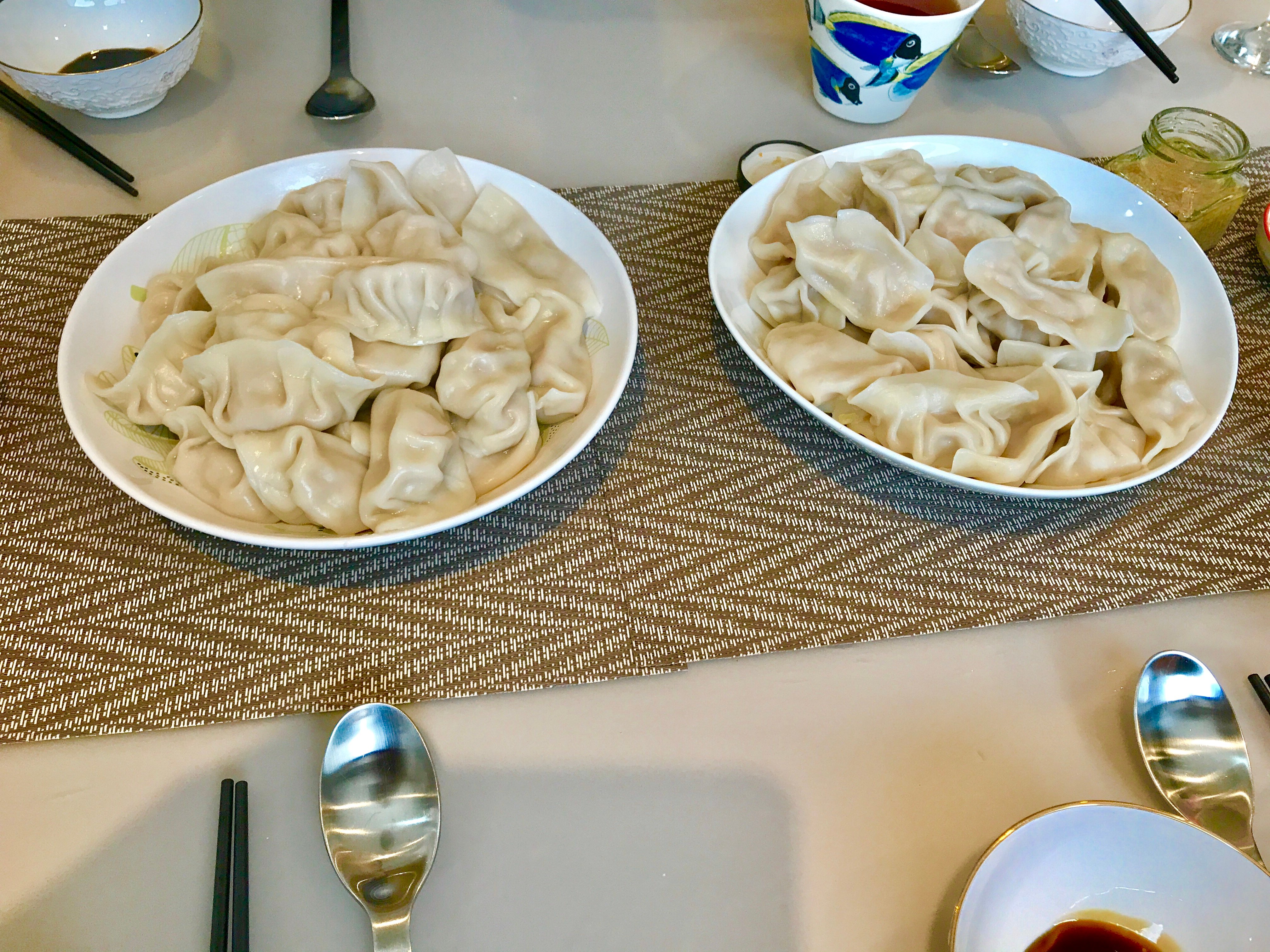
Since the inception of dumplings, they have been enjoyed by people all over Asia, and now, all over the world. In China, they are more frequently eaten in the northern provinces, especially during the New Year festival. They represent the passing of old, and welcoming of new, and also carries a bit of divine respect to the heavens. By eating dumplings, you are clearing your body of bad luck.
For those people who live far away from their families, a trip home to enjoy dumplings together with their family is a common occurrence. It's an act of filial obedience as well as an acknowledgement of a perfect humble abode. This is why dumplings have a special place in each Chinese person's heart.
Today, I decided to make dumplings with my friend for no other reason than it being a joyous activity and one that allows us to bond over the activity. Below is the process for making dumplings, let's begin!
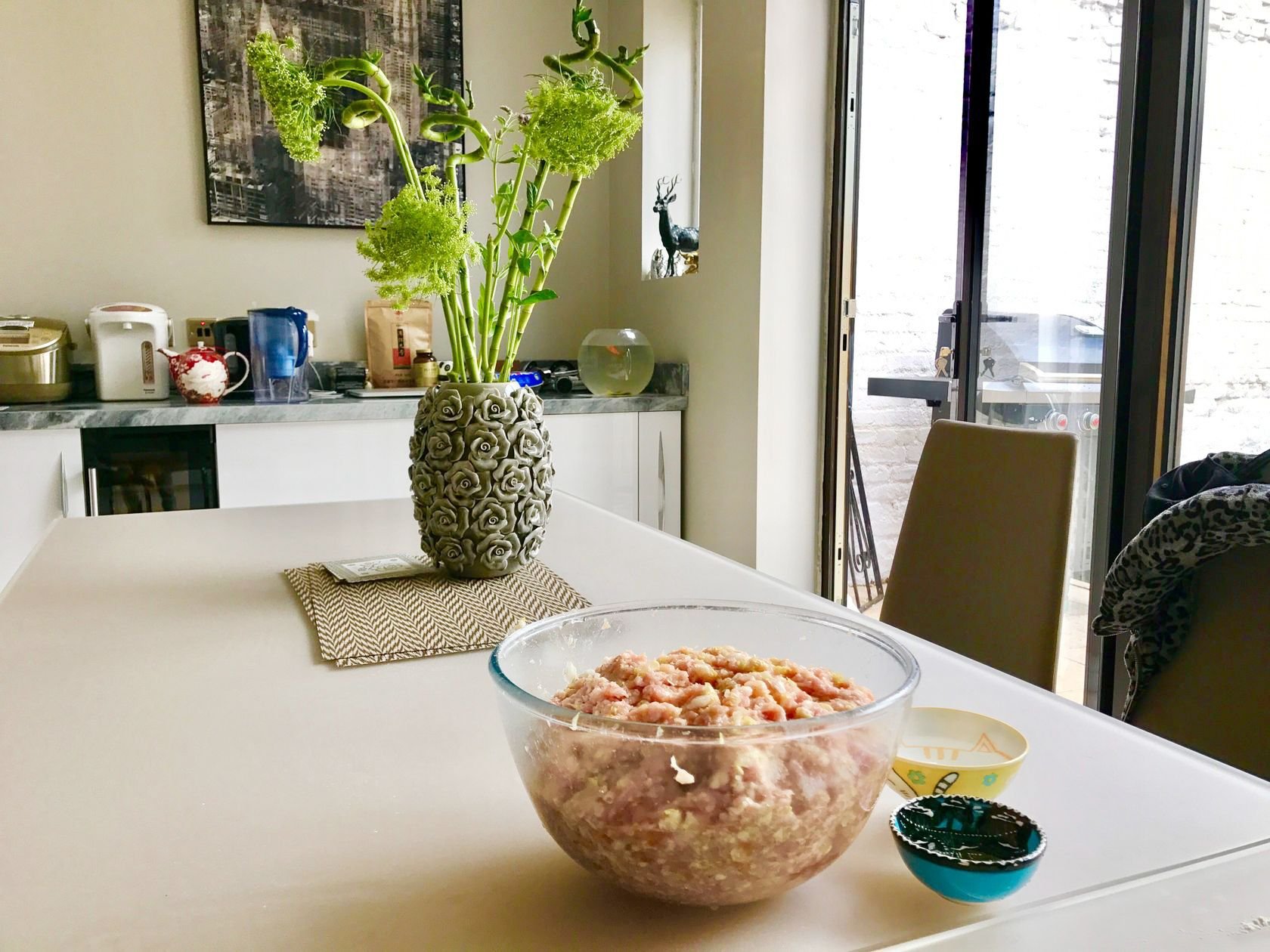
The most important step is making the filling/stuffing. Today's stuffing will be mince pork and prawns. You will need the following.
Minced Pork 猪肉粒
Fresh Prawns 虾仁
Chinese Cabbage 白菜
Salt 盐
Eggs 鸡蛋
Light Soy Sauce 生抽
Sesame Oil 麻油
Olive Oil 橄榄油
Dumpling Dough Skin 饺子皮

Wash the Cabbage and then dice into small pieces like so.
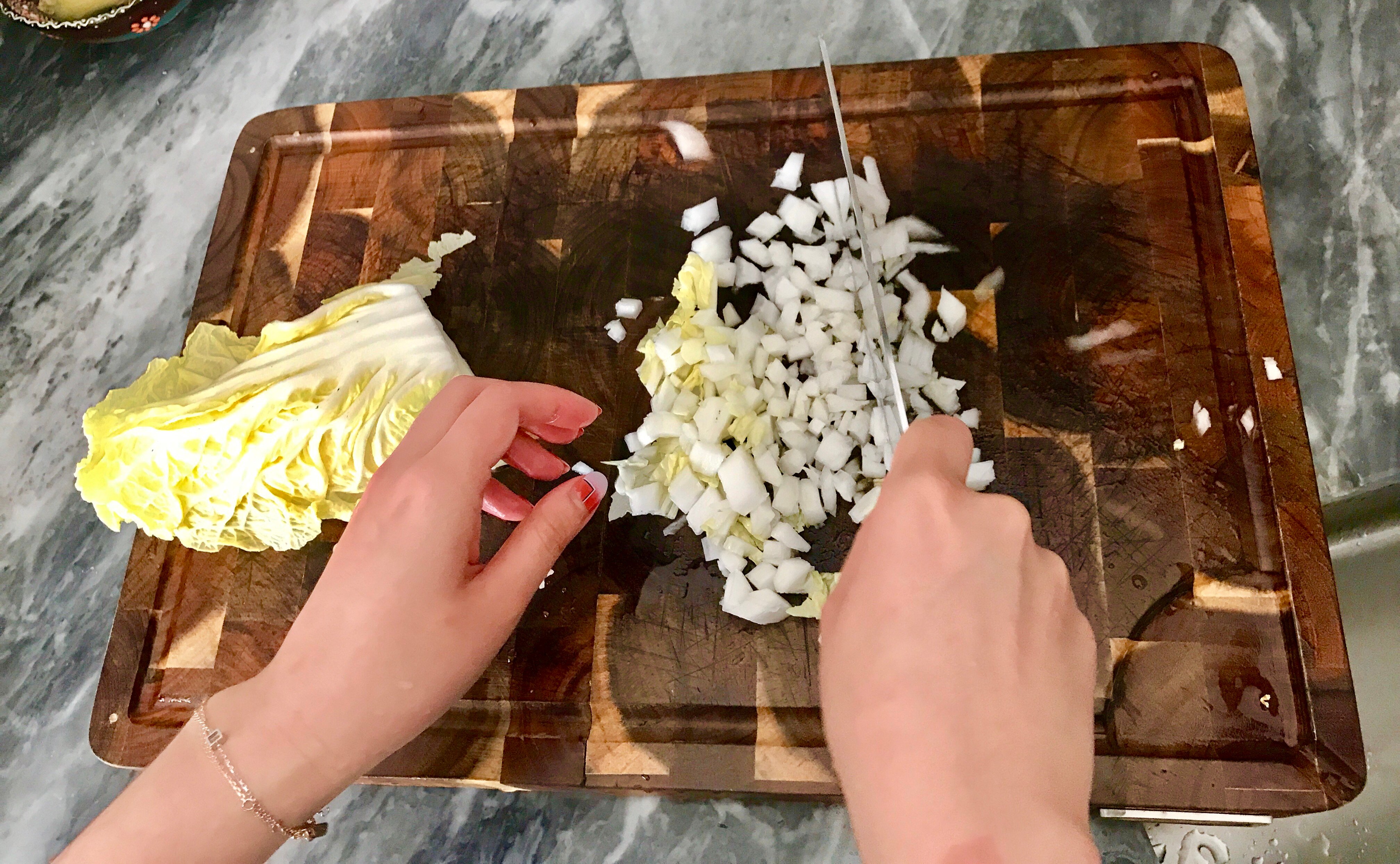
Dice the Prawn too, until it is almost like a mince texture.
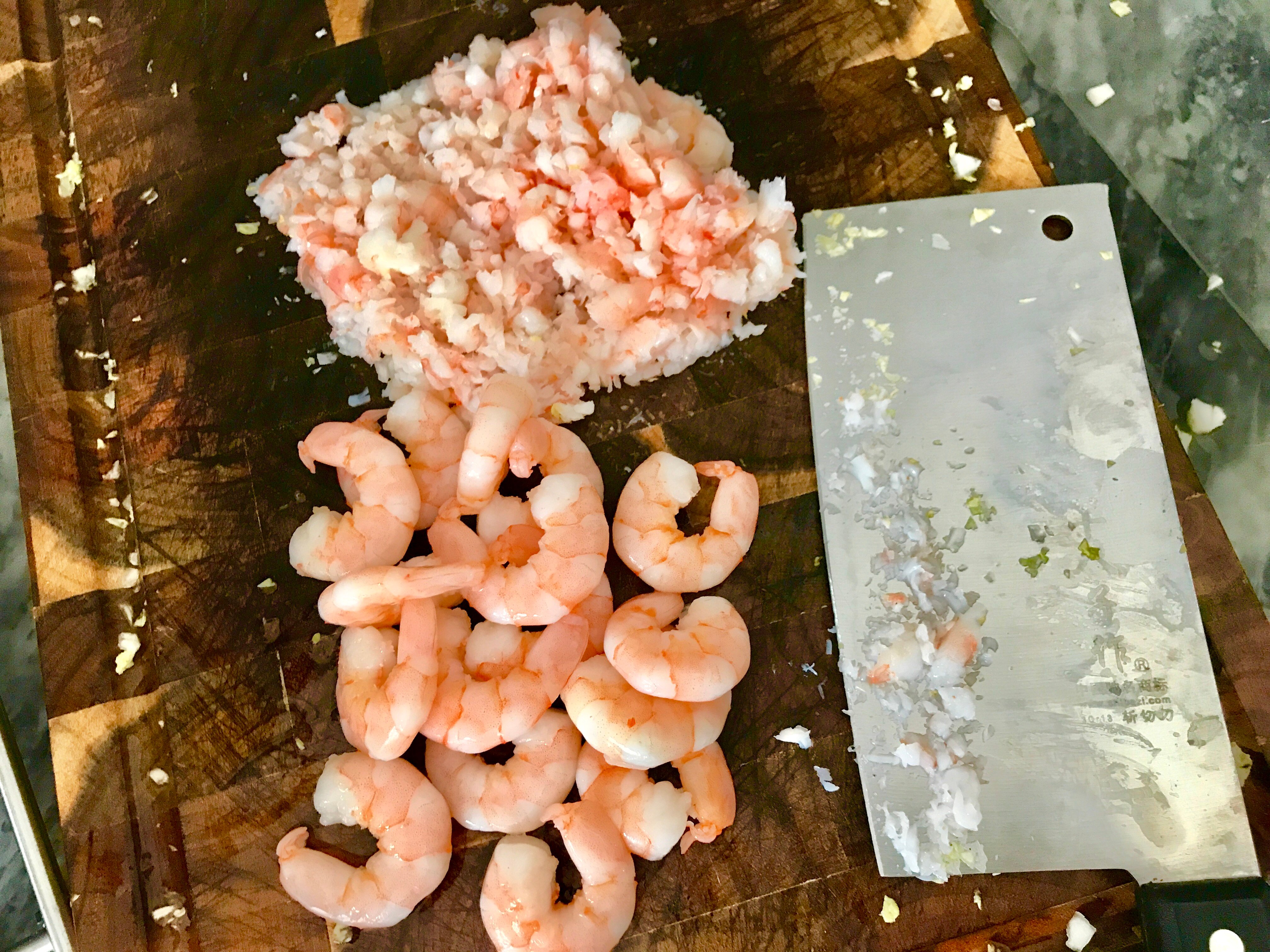
Because the cabbage has an inherently large amount of retained water. We must add some salt to the mix, then use our hands to massage the excess water out.

Next, add the prepared cabbage and diced prawns to the minced pork. Add some light soy sauce, olive oil, and sesame oil then give it a good stir. Adding a raw egg will help lubricate the mixture and make it easier to mix evenly.
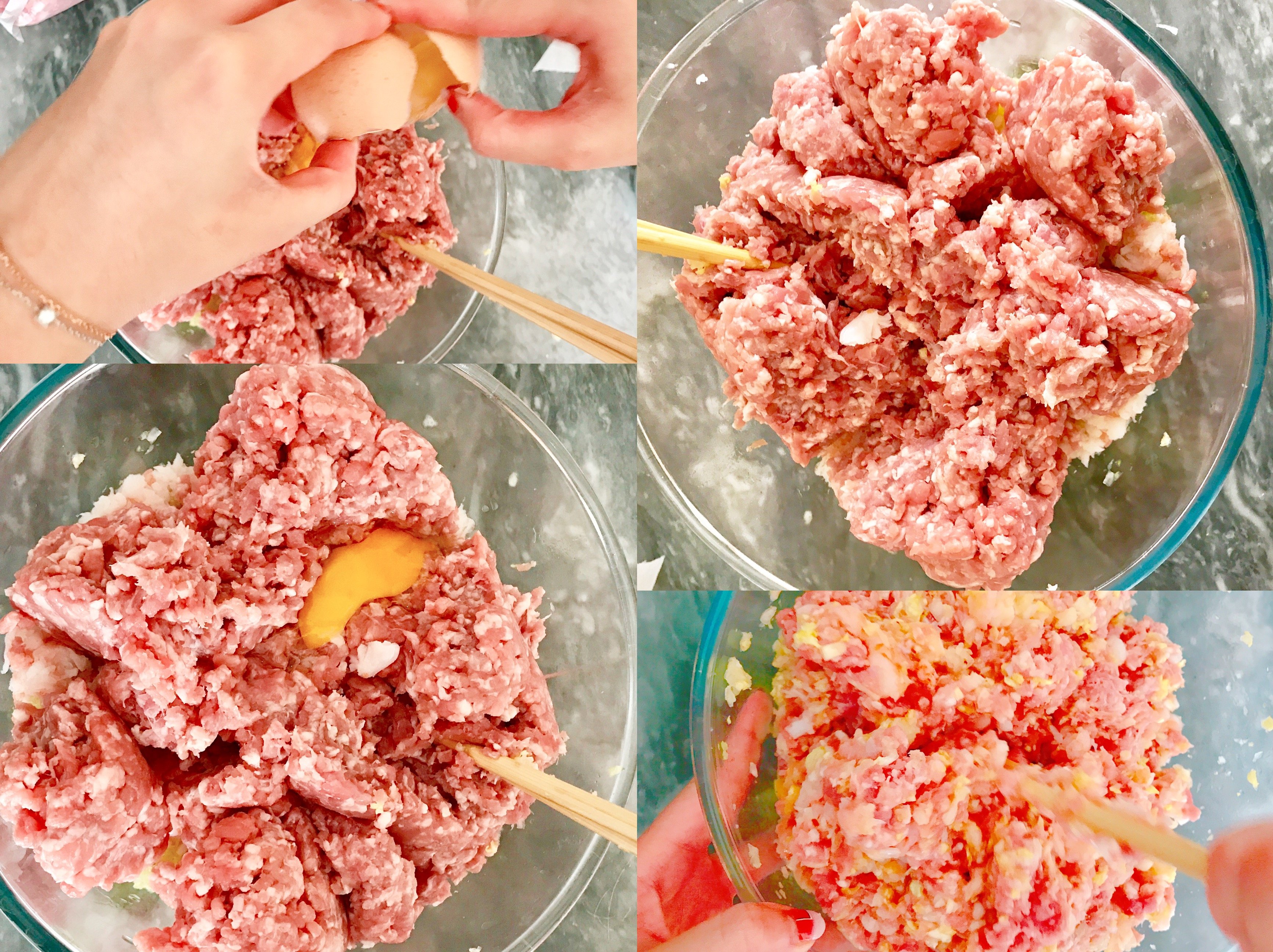
With the stuffing prepared, it's time to wrap the dumplings. I put a coin inside one of the dumplings, whoever is lucky enough to eat the dumpling with it inside will have good luck.
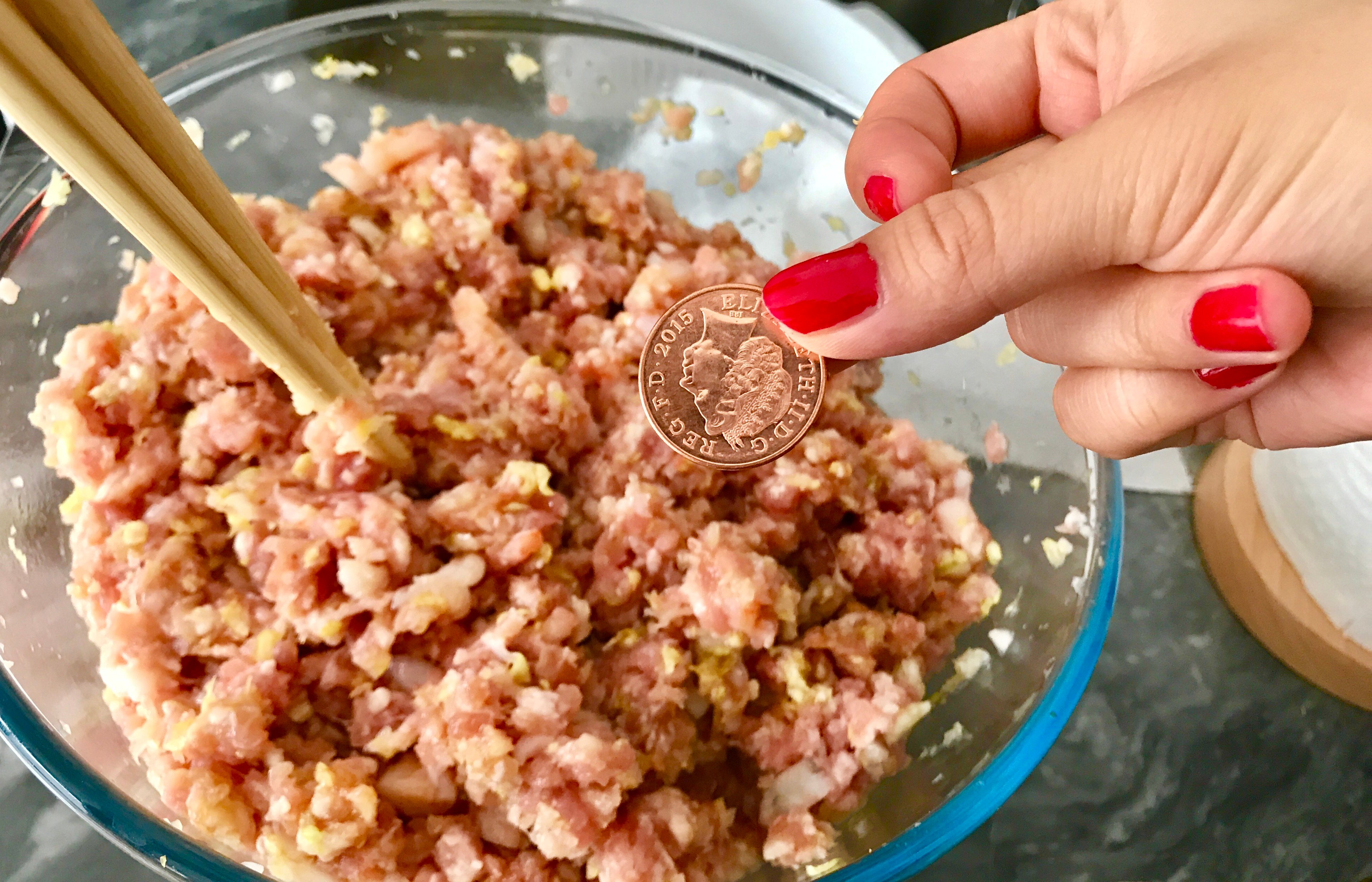
Now we have all the ingredients necessary, we just need a little bowl of water to get started.
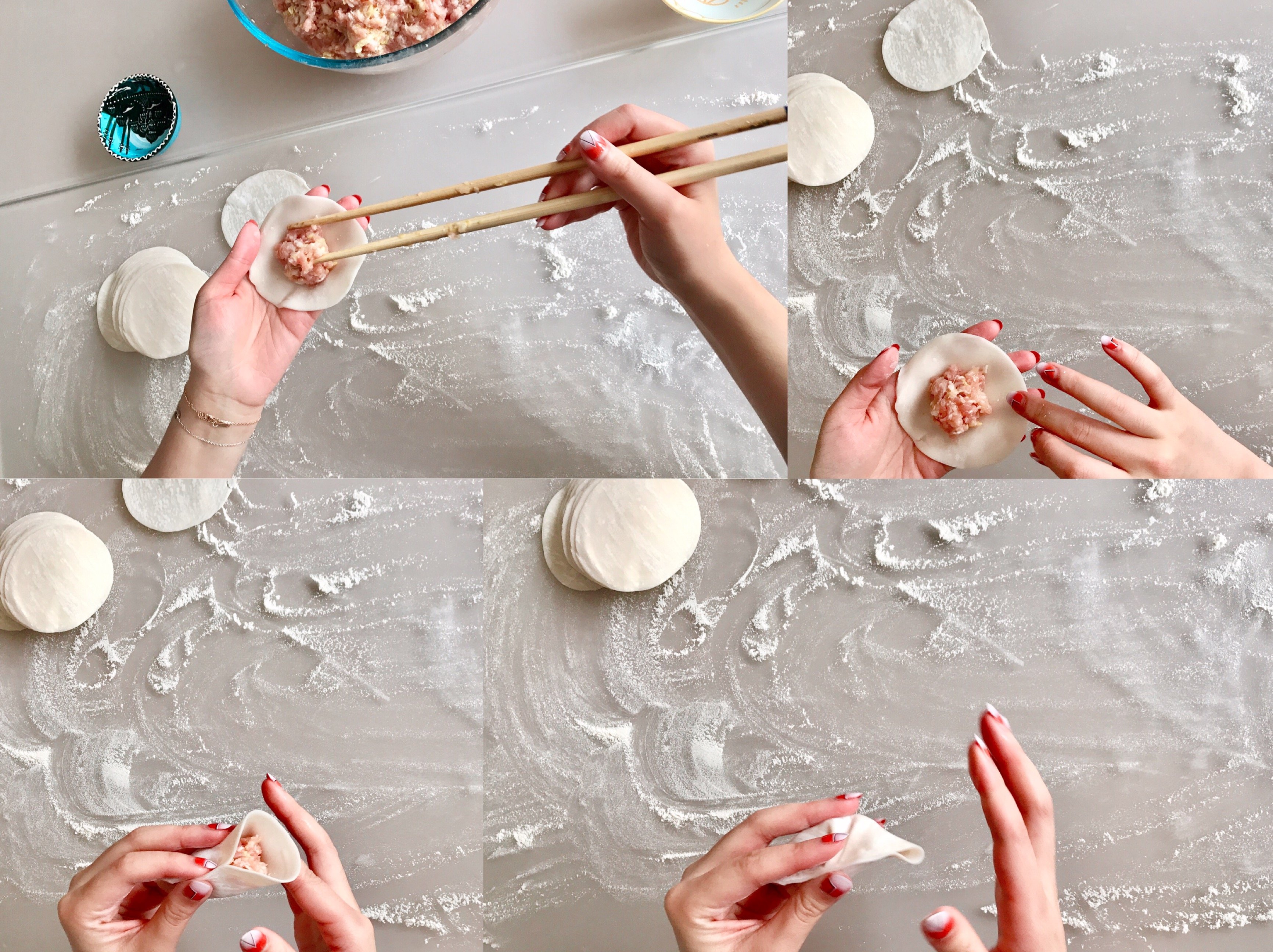
Take a small handful of the stuffing, and place directly in the centre of the dumpling skin. Then, use your (clean) fingers and douse a little bit of water from the bowl around the space around the stuffing. This makes the dough glutinous enough to stick together.

First close the dumpling by letting two opposite edges meet, then, using the excess skin, repeatedly use the origami squash fold technique to create the pretty layers.
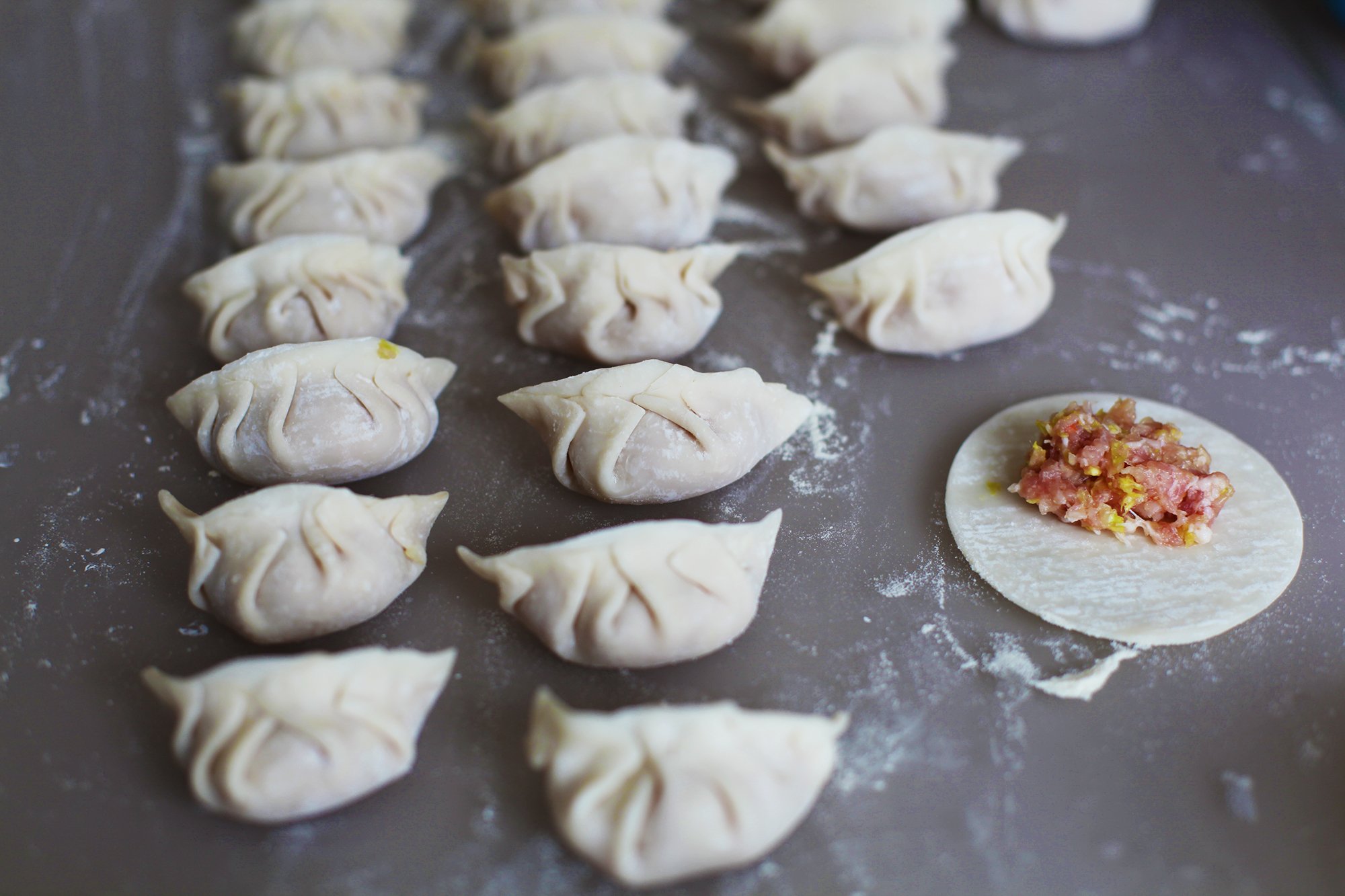
As easy as it looks, I actually found it quite hard to get the hang of at first. If it wasn't too much stuffing, then it was too little. I also had several instances of the dumpling opening up and the stuffing fall out.
Still, after making several dozen, it got easier and I was on my way to becoming a dumpling master!

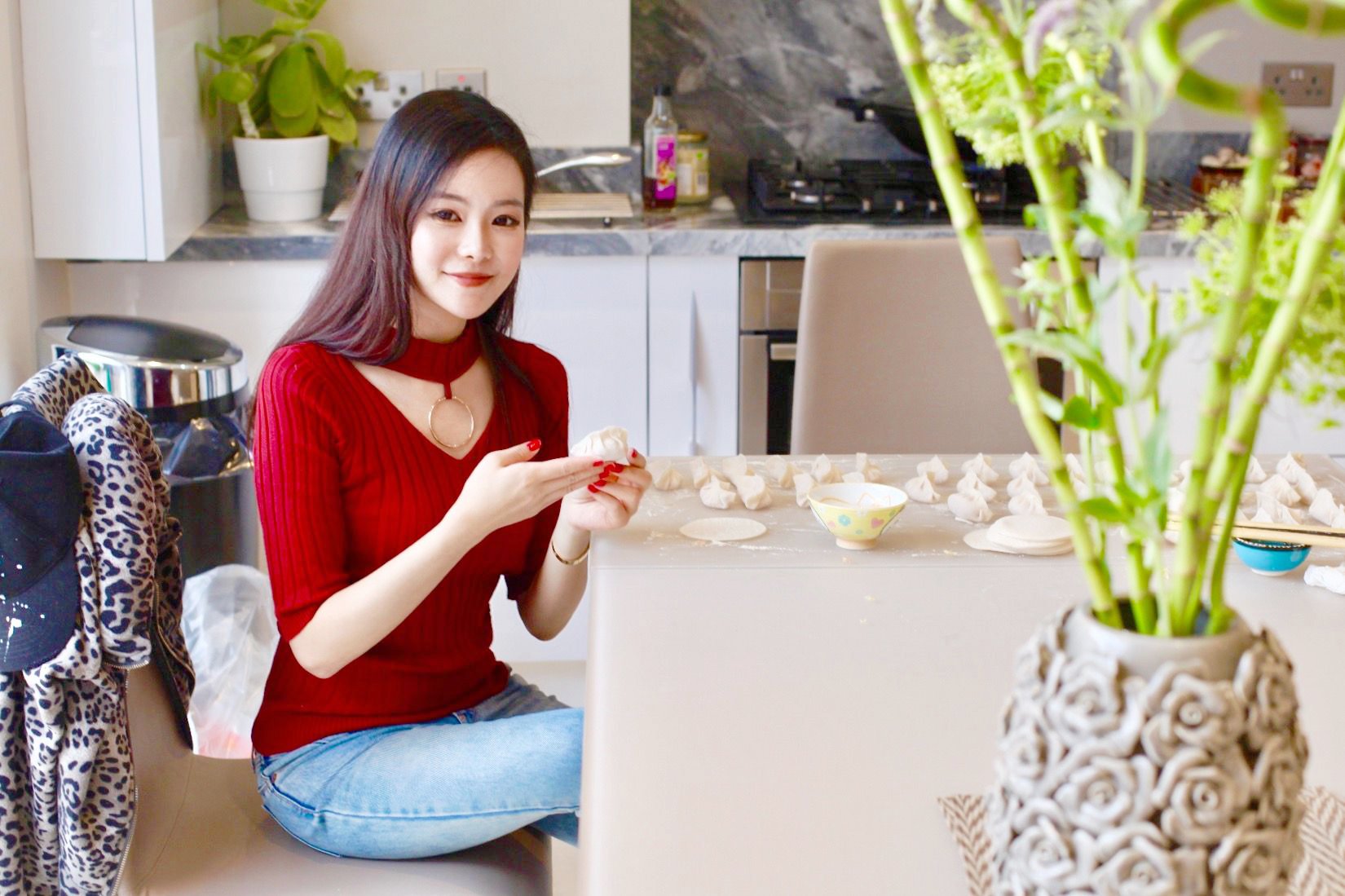
Next up, cooking the dumplings.
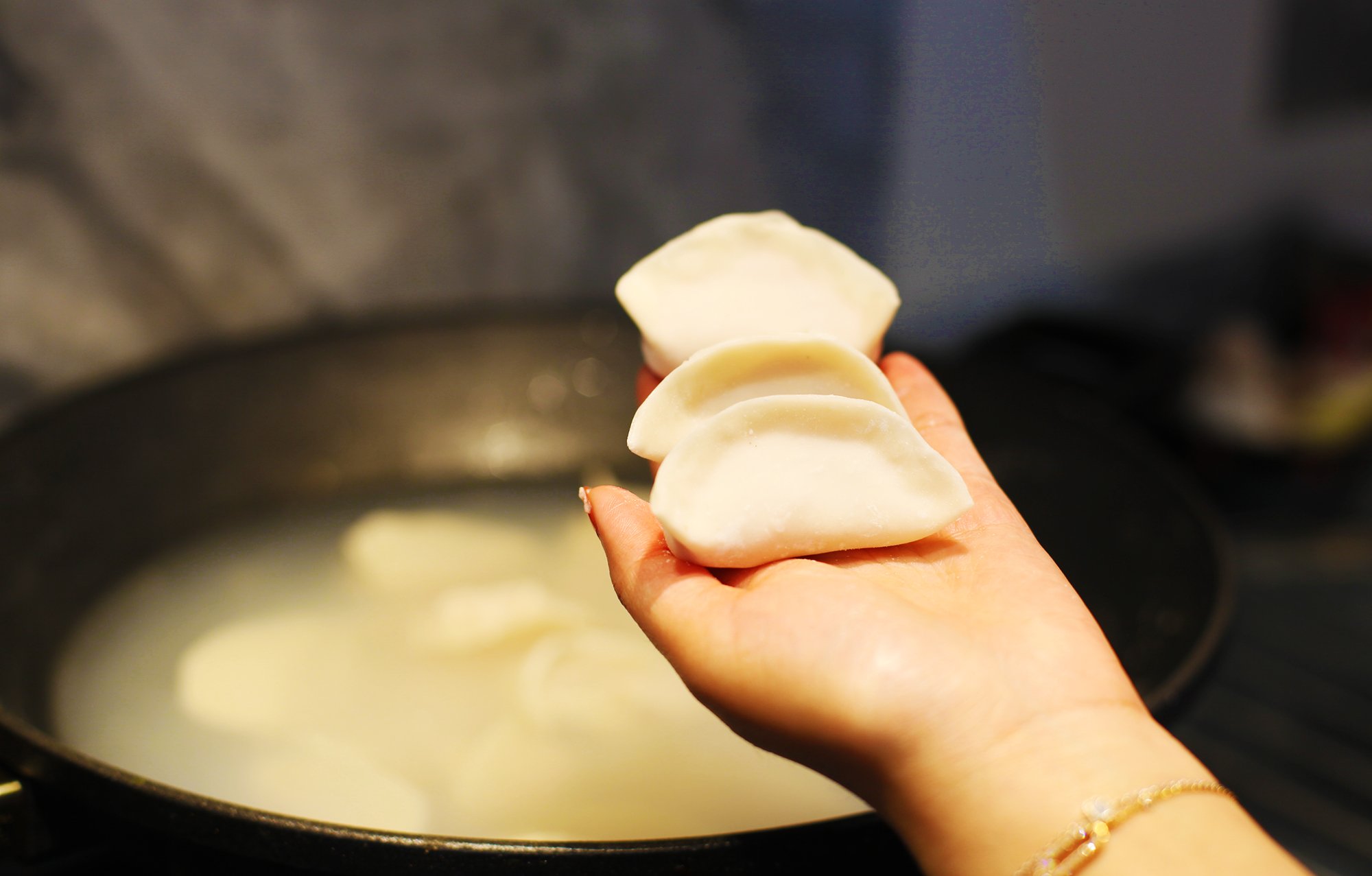

Add just enough dumplings to the cooking pot, and don't start with boiling water. Allow the water to reach boiling temperature, and then the dumplings will one by one start to float. This signals when they are ready to eat.
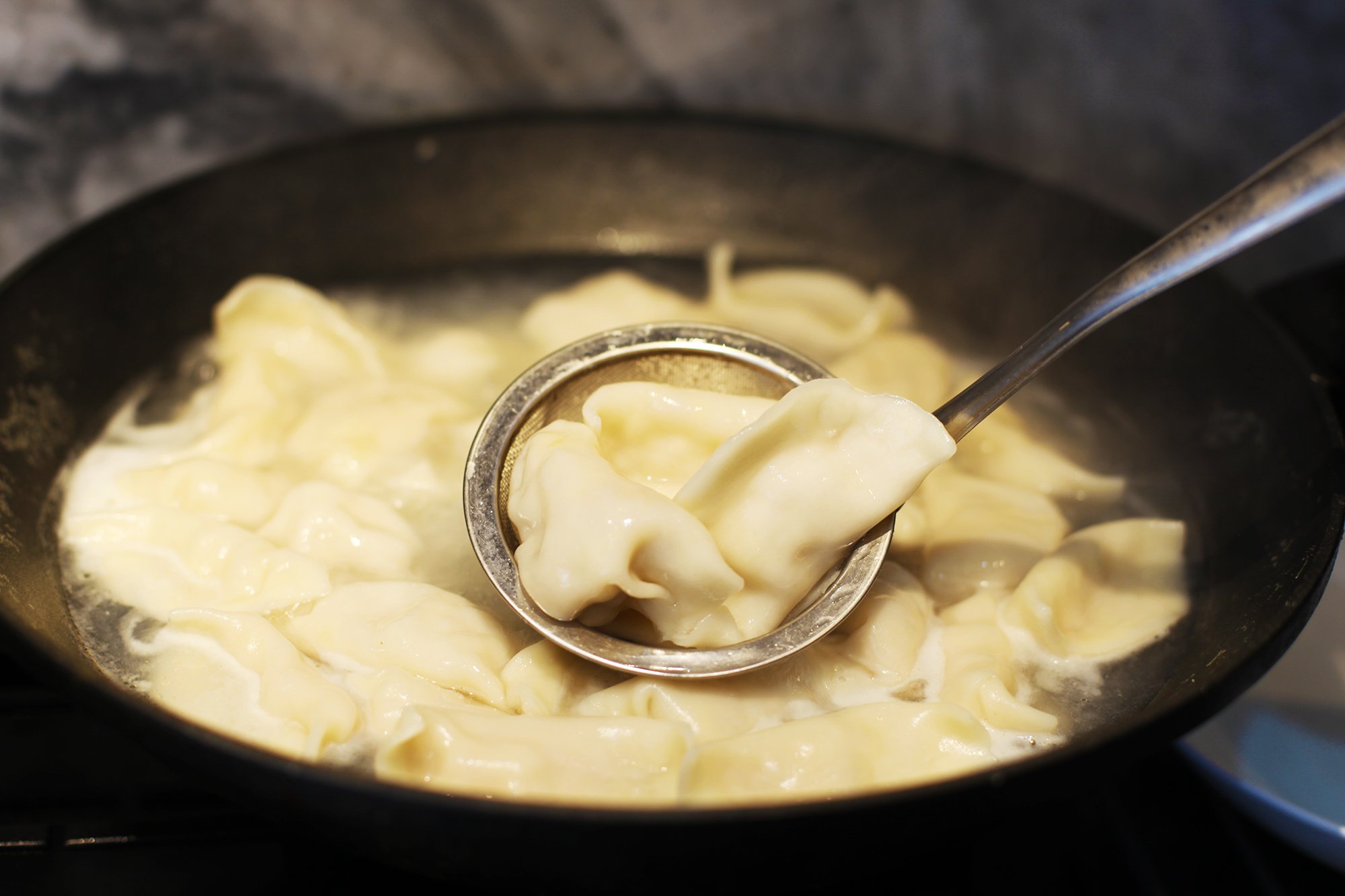
Finally, it's time to eat.
Each person will usually have their preference on how to prepare their sauce. The normal ingredients consist of soy sauce, vinegar, and garlic. Although those who prefer spicier tastes can add a bit of chilli sauce too.
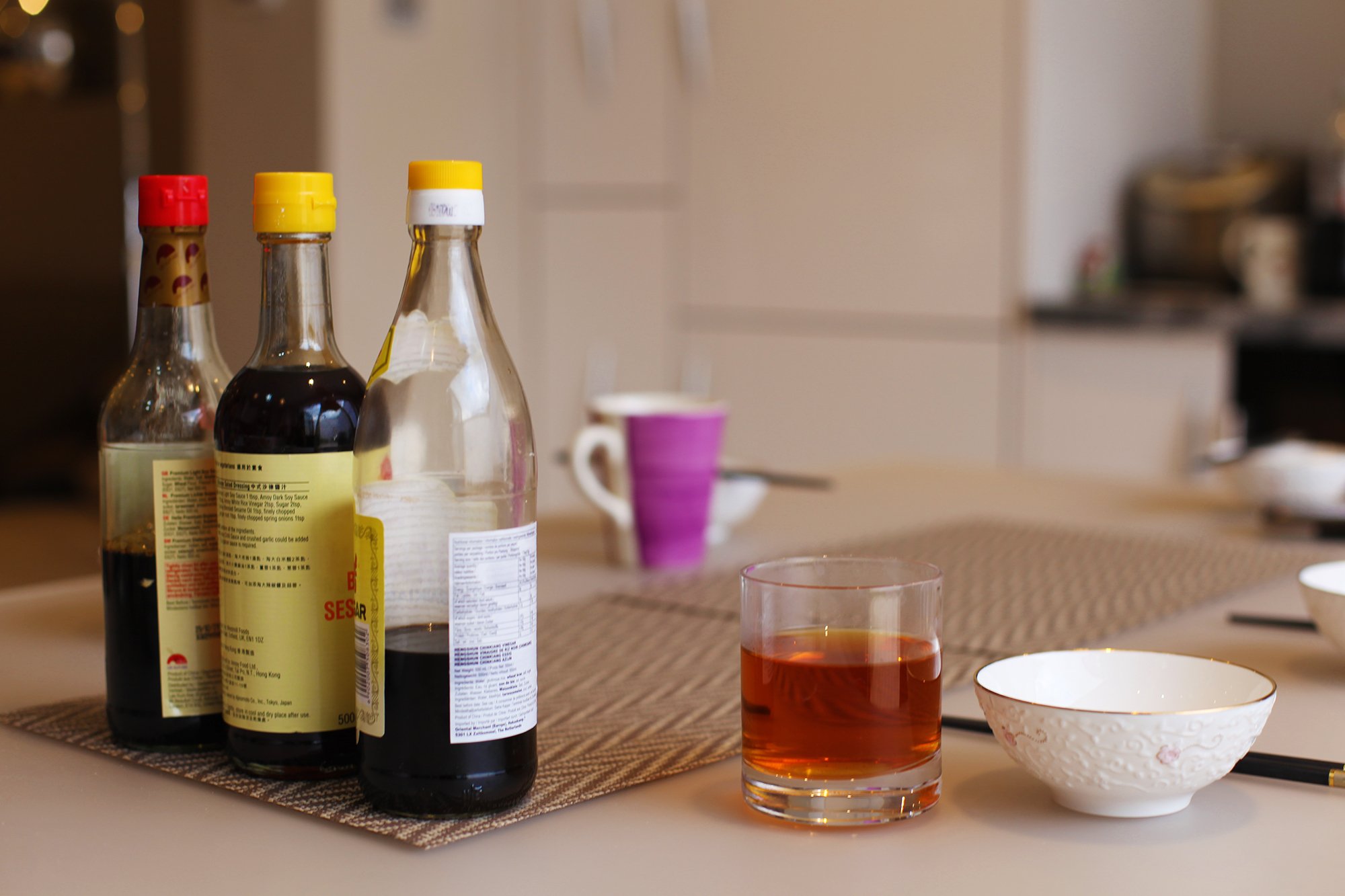
For such a simple dish, the process of making dumplings was quite interesting. I actually enjoyed dicing up vegetables the most, and then the food origami part. It almost felt like a form of art.
One thing is for sure, eating food you prepared yourself is always a very amiable experience.

Hope you guys liked my first dumpling wrapping experience, i'll have more Chinese cooking posts coming in the future!
Hopefully you all know how to prepare and wrap dumplings now!

If you liked my post, then I appreciate your up-vote, follow and comments!
在之前的文章中,我写了很多很多美食,今天终于有机会体验一把自己做美食了。今天我要和大家分享我第一次包饺子的经历。饺子是中国的古老传统面食之一,距今已有1800多年的历史。传说中饺子起源于东汉时期,是东汉时期的医生张仲景首创的。当时的饺子作为药用,张仲景用面皮包上一些祛寒的药材(例如羊肉、胡椒等)来治病,避免病人耳朵上长冻疮。饺子深受大家的喜爱,更是中国北方地区每年春节必吃的年节食品,寓意新旧交替,也是依照上天的意思,除掉一年里倒霉的事情。身在异地的人们也会不怕辛苦回家乡和家人一起吃顿热乎乎的饺子,寓意有个圆满的归宿,所以饺子在中国人心中有着很神圣的位置。
今天我和朋友决定在家里一起做饺子,是欢乐的制作美食家庭聚会。下面就是做饺子的过程,现在我们一起开始吧:
首先制作饺子馅是最重要的工程。我们今天要做的是猪肉鲜虾白菜饺子,所需材料:
猪肉粒
虾仁
白菜
盐
鸡蛋
生抽
麻油
橄榄油
饺子皮
1 将白菜洗干净,剁碎。
2 将鲜虾剁碎。
3 因为白菜中有大量水分,所以要加少量盐,戴上手套把水分挤掉。
4 把猪肉,虾和白菜混在一起,加入生抽,橄榄油和麻油,并发一个生鸡蛋,增加润滑度,让肉团更容易搅拌均匀。
开始包饺子,我准备了一个幸运硬币放进饺子里,谁吃到就会很幸运。准备好饺子馅和小碗水,就可以开始 包饺子。放一小坨肉,把边蘸上水,这样面粉就有了粘性,然后折进来。我一才开始真的不太会包,不是馅太多,就是饺子包好后陷露出来了。不过慢慢的就掌握了要领。接下来就煮饺子了。等饺子熟了,会浮在水面上,就可以开吃了。吃饺子的时候会配上醋,喜欢辣的可以加点辣椒油,味道会更好。
做饺子的过程真的很有意思,我尤其喜欢切菜的过程,还有包的过程,好像在完成一件艺术品,吃到自己亲手做的食物,真的比任何一家饭店都亲切。希望你们喜欢我第一次包饺子的经历,之后还有更多的中餐制作过程相要和大家分享。包饺子,你们学会了吗?
